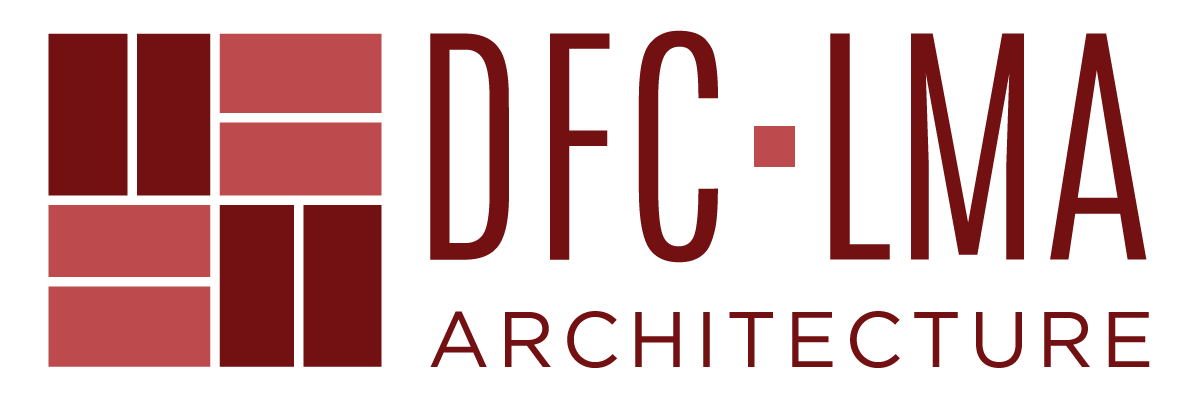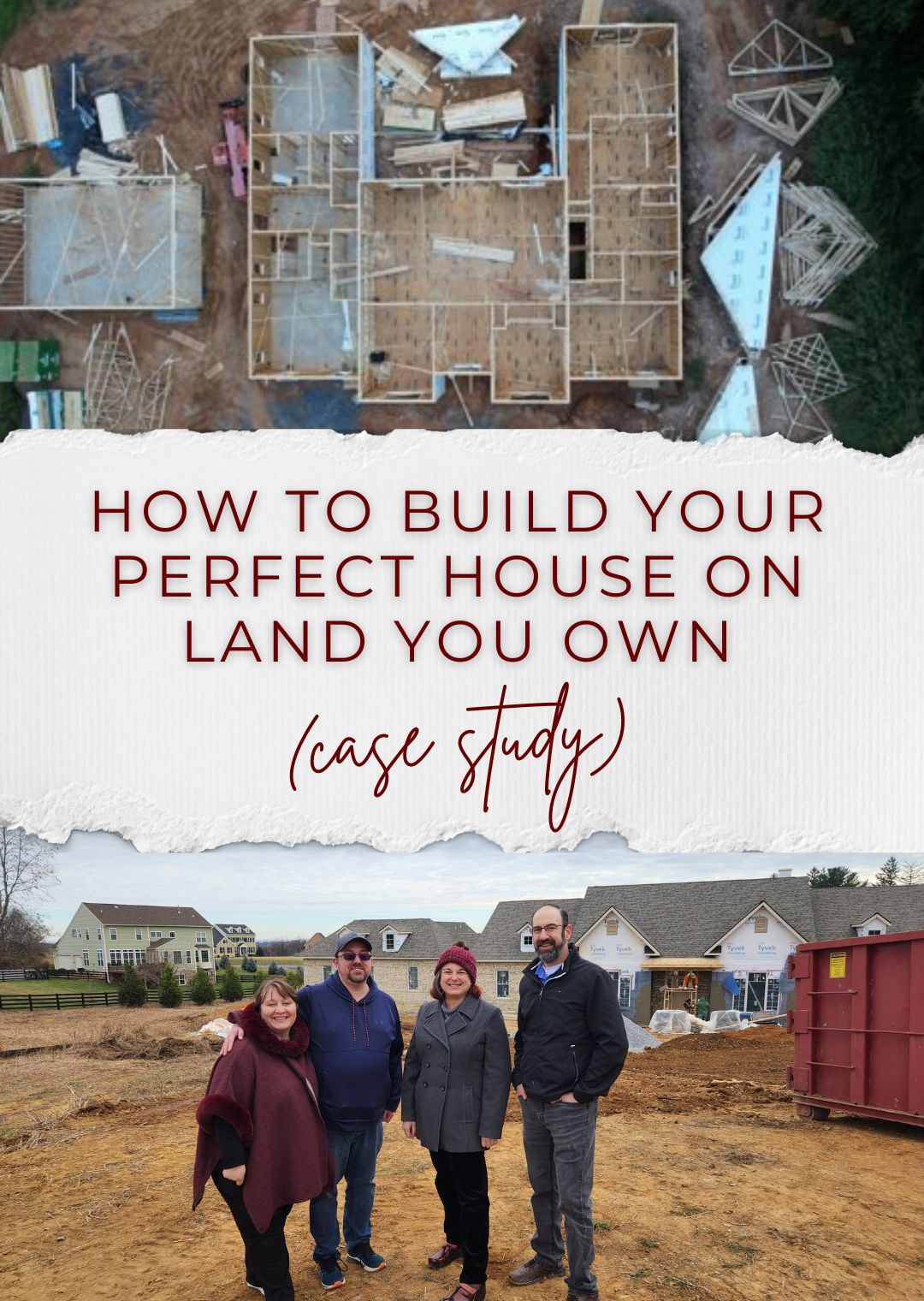What To Expect: How To Build Your Perfect House On Land You Own (Case Study)
Dive into this unique case study with us and learn about our specific process of building your perfect custom house on land you own. Just need the recap? Jump right to a section:

Should I Buy Land First, Then Build?
Step 1: When is the right time to reach out to an architect when you know you want to build?
Short answer: always sooner rather than later.
First-time custom home builders may be wondering, “Should I call an architect before I even close on a property, or is that wasting the architect’s time if it’s not guaranteed?” There is a lot of value in consulting with an architect at the very beginning of their search for land so that new owners are empowered to make the best decision for themselves. In a perfect scenario, that’s before they’ve even paid money for land that might not have worked. Many property sales allow for “study periods” of up to 90 days.
The surprising truth is that even on a roomy two-acre property, there might be only one good spot for a structure. Then the land and zoning may influence the design choices in such a way that the homeowner would have preferred to know at the outset.
Though we prefer an early start on any project, we’re not afraid of challenging puzzles if you have already sealed the deal!
Case Study:
Sometimes, new custom home construction projects even start out as renovation projects.
Our clients first approached us to design a renovation of their current home in Frederick County. Their site was so challenging that none of the feasible renovation options fully satisfied their unique needs. Their goal was to have a three-generation home with three primary suites on the main level. As it turns out, that’s just not something that exists in the real estate market or is easily come by in a typical neighborhood renovation. So, they decided to go custom.
- “When our clients were shopping for a piece of land, they approached us and said, ‘we found this E-plan. It’s not exactly what we want, but it is a good indication of the footprint that we want.’ There really was only one location where this house would fit because of the size of the footprint, the septic system location, utility easements and the zoning setbacks. Once we determined the house would fit, they purchased the land.“
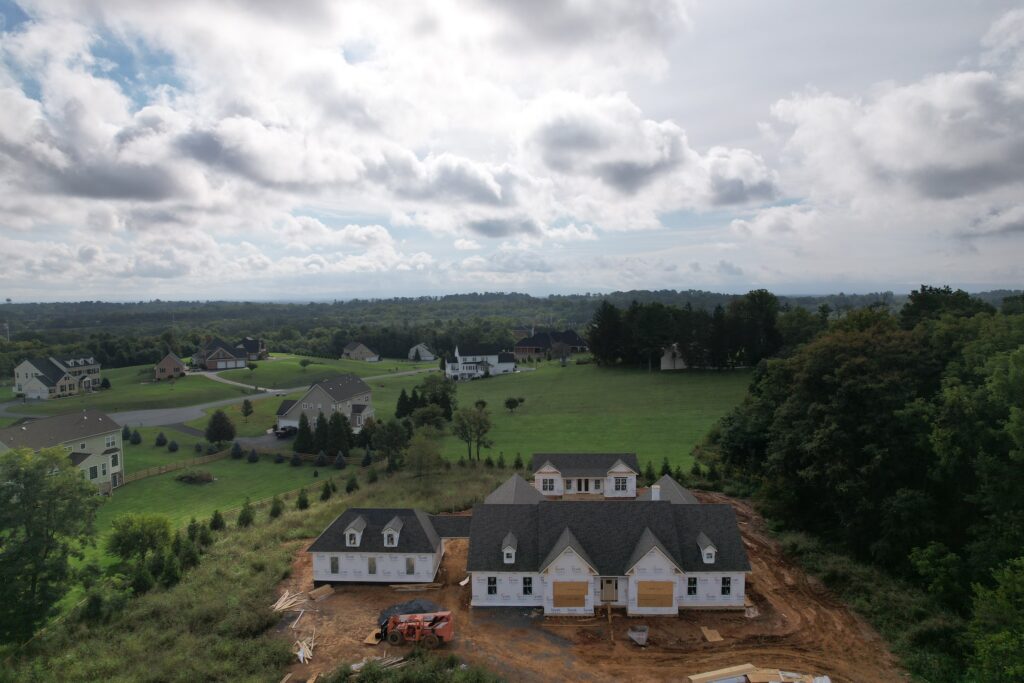
Step 2: Installing Utilities And Other Land Improvements
We work with the site engineer to locate a septic field, a backup field, and their requirements for proximity to the proposed house site. Next, we locate the well because it usually has to be a 50-foot radius from the house. Getting that placement just right zeros in on the perfect placement of your dream home.
We work with the site engineer to locate a septic field, a backup field, and their requirements for proximity to the proposed house site. Next, we locate the well because it usually has to be a 50-foot radius from the house. Getting that placement just right zeros in on the perfect placement of your dream home.
Finally, when it’s time to build, your builders will coordinate the installation of the electricity.
What To Do When Building A House On Land
Step 3: Designing and building a new house on land can be overwhelming when there are so many choices to make in custom design on a new piece of land. How do you manage the project?
By working together with an architect, we guide you through each phase of the design process.
- “When we’re transitioning from the schematic design and pricing to the permit drawings, we usually have a big powwow with the builder and go through what I call construction techniques. We discuss crawl spaces versus basements, wood floors versus concrete floors, how to build the roof, etc. We want to get into the crux of how this house is going to go together.”
Then, we take all the design options in bite-sized pieces from the very first sketches to elevation drawings over the course of several meetings – sometimes up to monthly.

Case Study:
In our case study project, our clients came to us with an E-plan, and had sketched in a third master suite where there was a ‘library’ as a starting point. They shared inspiration photos to hone in on the style and feel of the design, while we worked out how to incorporate all of the needed spaces.
Aside from needing three primary bedrooms on the main floor, they wanted full ADA access. This is where going custom really shines in its ability to gracefully solve really unique requirements.
- “In the design we created for our clients, you can roll from the garage across a covered breezeway into the back hallway and into the house. That was a big priority for them.”
Should you buy E plans if you also want to hire an architect for a custom home design?
- “So, when asked this question, we tell clients to go ahead and purchase those plans. They’re usually somewhere between $1000 and $2500. Using that design as a starting point, modeling it in our own system, and working through the schematic process from there is one benefit of time-saving. The purchase of the design is about what a first-time meeting would cost so it’s like we’re jumping into the second design meeting because we already have this platform of layout or aesthetic. We have a sense of what the style is that they’re looking for, or if it’s not exactly what they want we can change that.”
If a client were to simply come up with a list of what they want in their custom home, which we call a Programming List, then we absolutely recommend that folks send us images from magazines, design books, or Pinterest. We’ll use that information during our first meeting.
- “People ask me, ‘what is my {architectural} style?’ And the cheesy answer is that it’s whatever my client’s style is. But there’s a lot of truth to that. I don’t have a design agenda, myself. I want to make sure that I’m meeting the owner’s needs in their home. So I need some basis to start from.”
At the end of the day, we as architects represent the client. Through our meetings, we get clarity on the client’s vision and where their design inspiration is coming from. Likewise, we use these opportunities to talk through any necessary changes that might alter the aesthetics of the home due to technical constraints. With this high level of communication, we can create the absolute best outcome for our clients.
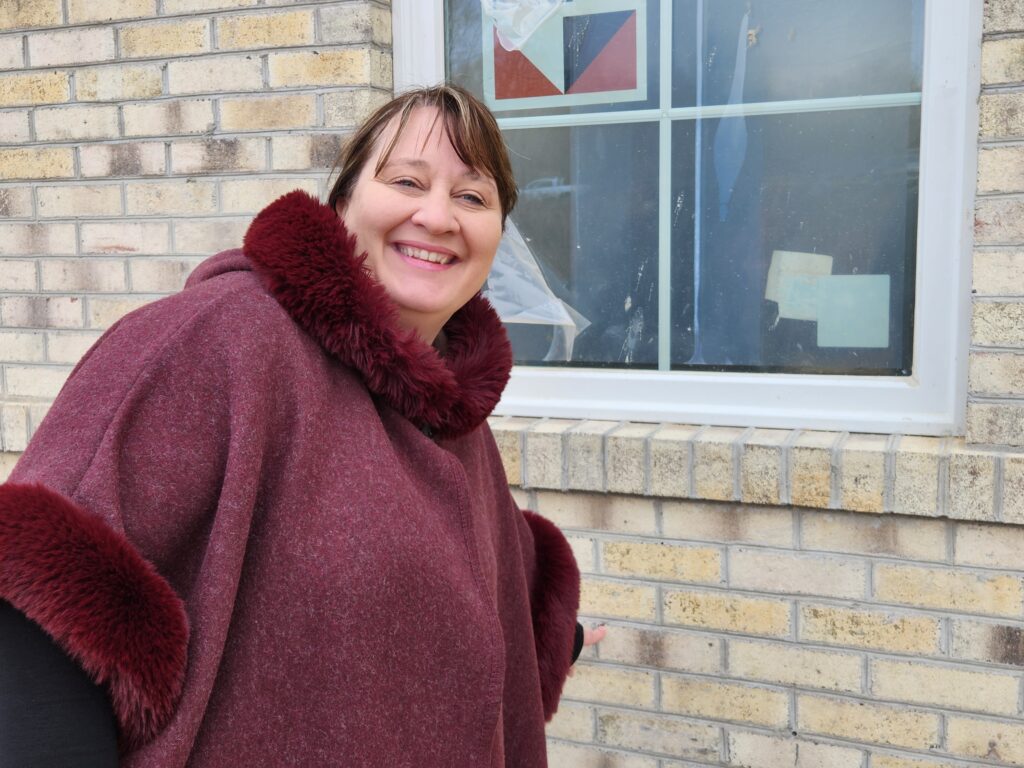
Above: The client laying her own brick
How long can someone expect a new custom home design to take?
From walking in the door to permit drawings, you can expect designs for a custom home to take between 8-10 months. Great communication and quick decision-making always make the process smoother and faster.
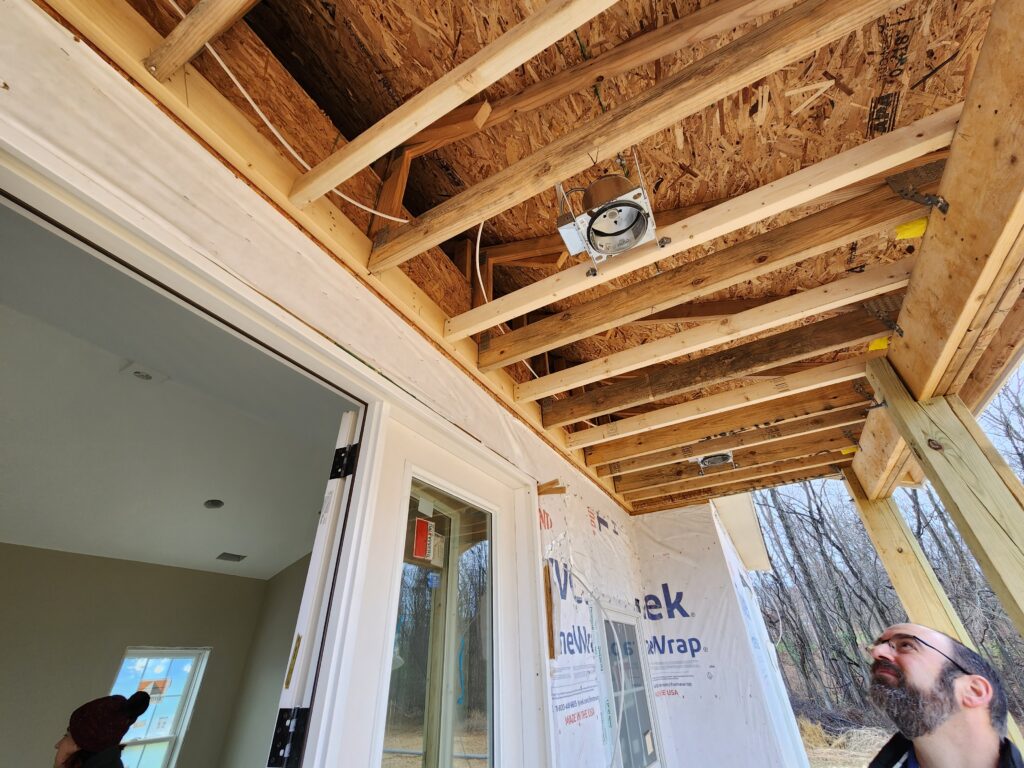
Case Study:
As our clients broke ground and began building, they invited us out to the site to show off the progress. We ended up seeing a few little question areas, which then put the builder in the hot seat, but we were able to find a good resolution before it became a larger issue.
Setting up regular site visits with the builder, the owner, and the architect is indispensable so that everybody can ask questions and have a discussion as the complexity increases.
How much should someone expect to pay an architect for a new custom build home design?
Typically around 5-7% of the total cost of the project will be your architect’s fee. This percentage is actually comparable to a renovation project or even buying a new house!
- “Here at the office, Don likes to explain your investment in architectural services by pointing out that when you buy a new house, realtor fees are about 6%. Similarly, an architect will generally cost 5%-7% of your total construction budget through the permit drawings.”
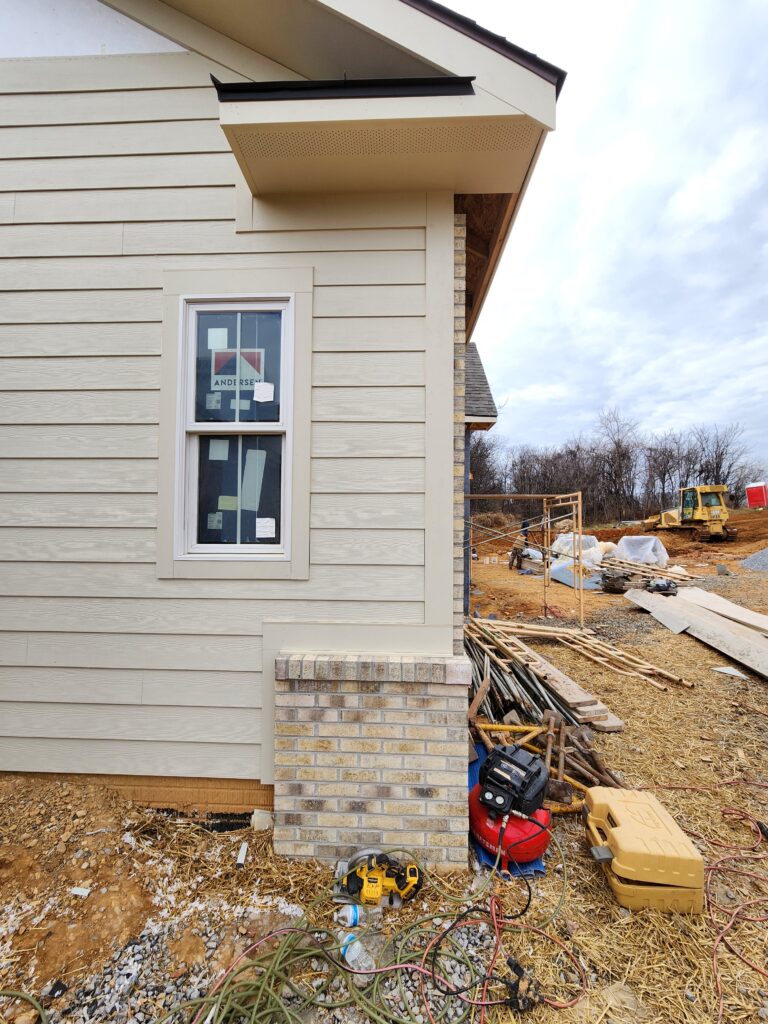
What’s your favorite thing about new builds on land?
- “I think frankly, the size and the overall complexity and having it all come together is my favorite part. Every iteration, every meeting that we have, we’re getting more and more detailed and I find that to be really exciting. That’s still true with renovations, but I think I just like the scale of it -it’s just exhilarating. You get to see your entire composition and meet those homeowners’ needs.”
Are you starting a building project in 2023? How can we help you live more efficiently and happily in your home or business?
